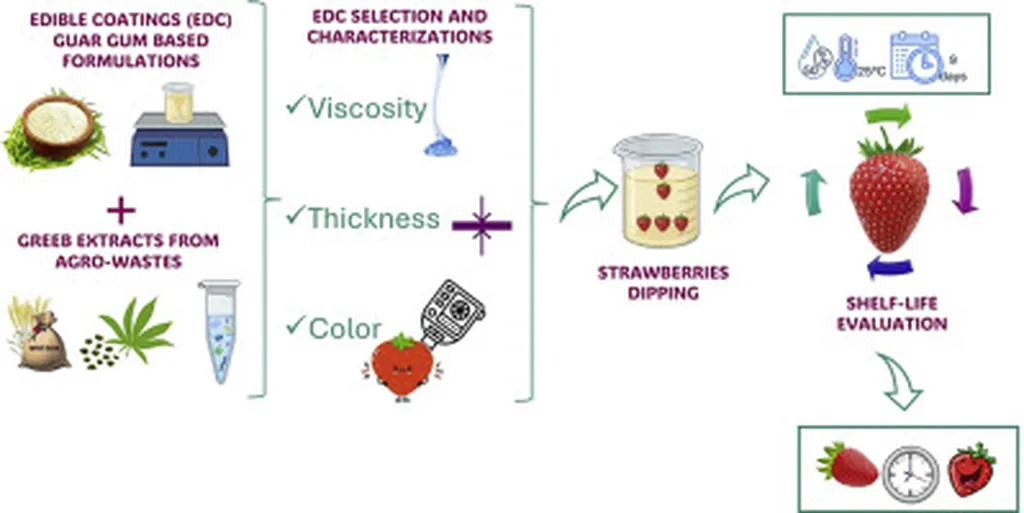In the quest to reduce food waste and promote sustainability, researchers have turned to an unlikely ally: agro-wastes. A recent study led by Vito Gigante from the Department of Civil and Industrial Engineering at the University of Pisa and the National Interuniversity Consortium of Materials Science and Technology (INSTM) in Florence, Italy, explores the potential of these by-products in creating eco-friendly edible coatings for strawberries. The research, published in the journal *Carbohydrate Polymer Technologies and Applications* (translated as *Applications of Carbohydrate Polymer Technologies*), offers a promising solution to extend the shelf life of fresh produce while minimizing environmental impact.
The study focuses on developing guar-gum-based edible coatings enriched with green extracts derived from wheat bran and hemp seeds, both of which are typically discarded as waste. “Agri-food by-products can offer a sustainable solution for developing bio-based edible coatings that minimize the dependence on fossil-derived resources while promoting a circular economy,” Gigante explains. This innovative approach not only addresses the growing demand for fresh fruits and vegetables but also tackles the pressing issue of food waste.
The research team evaluated the effects of various additives, including chitosan, waxes, and plasticizers, on the rheological properties, coating thickness, and color stability of strawberries. They identified a promising formulation based on guar gum, chitosan, and wheat bran green extract that significantly extended the shelf life of strawberries up to 9 days at 25°C. This formulation demonstrated remarkable potential in protecting the fruit from oxidative damage and microbial spoilage.
During the storage period, the researchers monitored several key parameters, including weight loss, chroma, total soluble solids (TSS), decay incidence, polyphenols, levels of monomeric anthocyanins, antioxidant activity, and microbial load. The results highlighted the potential of agro-food by-products as sustainable ingredients for eco-friendly coatings, offering an innovative food preservation solution and a sustainable alternative to conventional packaging.
The implications of this research are far-reaching, particularly for the energy sector. As the world shifts towards renewable and sustainable resources, the valorization of agro-wastes presents a viable option for reducing reliance on fossil-derived materials. “Such coatings protect fresh produce from oxidative damage and microbial spoilage, contributing to a circular economy,” Gigante notes. This shift not only benefits the environment but also opens up new commercial opportunities for businesses looking to adopt sustainable practices.
The study’s findings pave the way for future developments in the field of food preservation and packaging. By leveraging agro-wastes, researchers can create eco-friendly solutions that are both effective and sustainable. This research not only addresses immediate concerns about food waste but also contributes to the broader goal of creating a more sustainable and circular economy.
As the world continues to grapple with the challenges of food security and environmental sustainability, innovative solutions like those proposed by Gigante and his team offer a beacon of hope. Their work underscores the importance of interdisciplinary research and collaboration in addressing global challenges. By turning agro-wastes into valuable resources, we can take a significant step towards a more sustainable future.

